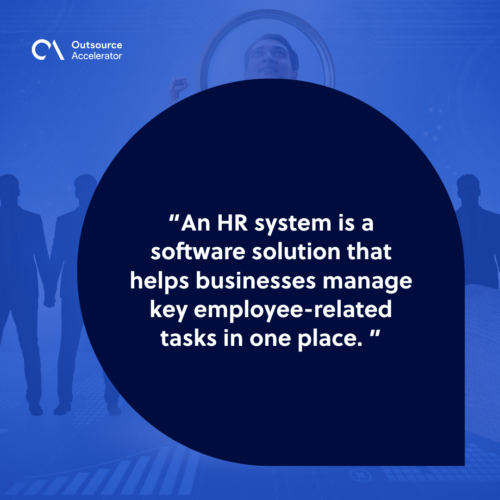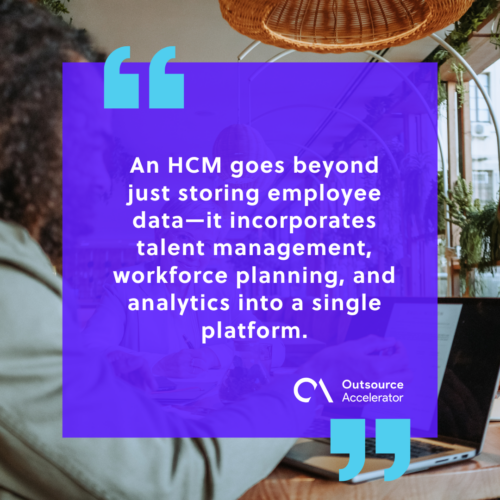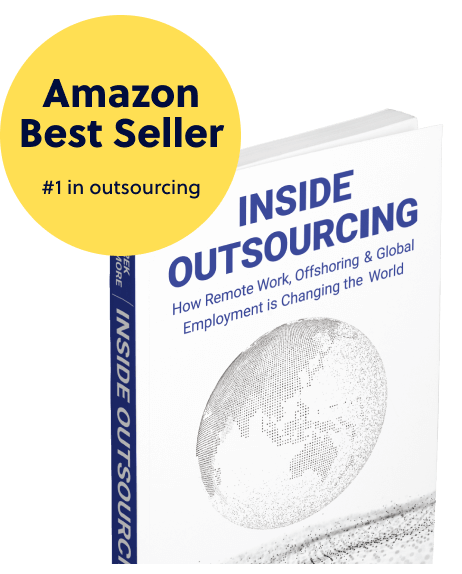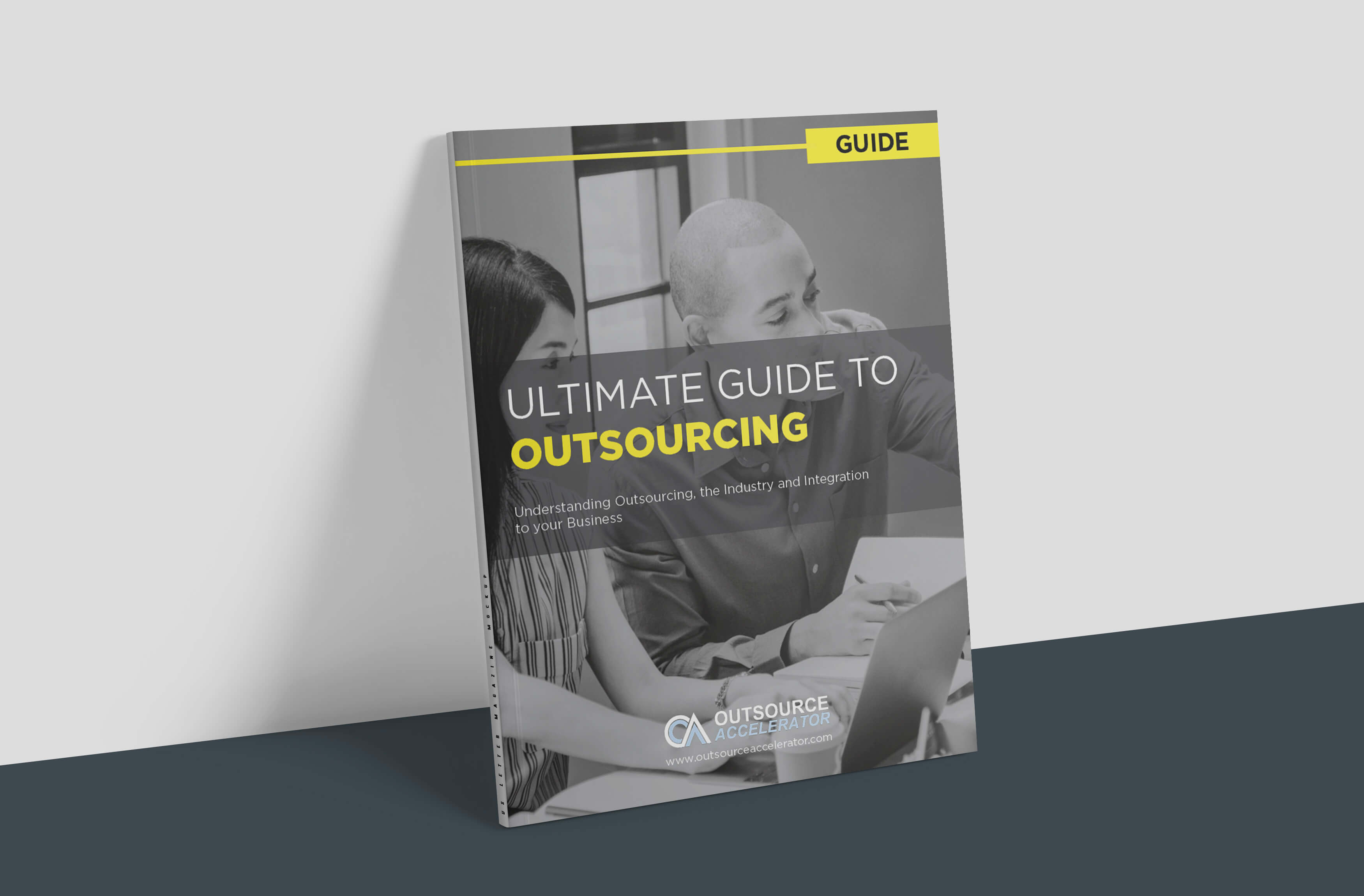8 most common types of HR systems and what they do

Relying on spreadsheets, paper forms, or disconnected tools might have been enough for your HR management team when you were just starting. However, as your business grows, these manual methods become increasingly difficult to manage and maintain reliable processes.
HR systems are designed to address these issues by centralizing processes such as employee record-keeping, payroll, recruitment, and compliance management.
A Business.com survey found that 25% of professionals improved legal compliance after implementing an HR system. This emphasizes that the right system can reduce errors and simplify regulatory oversight.
However, not all HR systems are the same. Some focus on basic employee information, while others include features for payroll, recruitment, learning, or performance management.
What is an HR system?
An HR system is a software solution that helps businesses manage key employee-related tasks in one place. Instead of relying on manual processes, it allows companies to handle important functions more efficiently and with fewer errors.
Some of the tasks an HR system typically helps with include:
- Storing and updating employee records
- Managing payroll and tracking working hours
- Handling recruitment and onboarding
- Monitoring time-off requests and attendance
- Supporting compliance with labor laws and company policies
Using an HR system benefits businesses by saving time, improving accuracy, and giving managers better visibility into workforce data.

What to look for in an HR system?
When you look through the different types of HR systems, make sure the one you need for your company aligns with your current strategic goals.
Here are the main areas to look at:
Ease of use
The HR software should be easy to understand and use. If your team can’t figure it out quickly, they’re less likely to use it correctly or at all. This will then lead to mistakes, missed steps, and wasted time.
Integration capabilities
Your HR system should be able to connect seamlessly with your existing business tools, such as payroll software, time-tracking apps, and communication platforms.
Without proper integration, information may remain siloed across systems. Your team may also end up repeating tasks or making decisions based on outdated and inconsistent data.
Look for systems that can link with:
- Payroll software – This ensures employee data, hours worked, and payment details are updated automatically without having to re-enter them.
- Accounting programs – This keeps financial records accurate and up to date, especially when it comes to payroll expenses and tax reporting.
- Internal communication apps – Updates, announcements, or approvals related to HR can flow easily across your team without needing to switch platforms.
Scalability
Good types of HR systems let you make changes so that they work the way your business operates. They should also be able to keep up as your team expands or your processes become more complex.
Key things to look for in an HR system includes:
- Modular features – As your business grows, you may need to add new functions, such as applicant tracking or performance reviews. A system that allows you to add features when needed is more practical than replacing the whole system.
- User capacity – The system should handle an increasing number of users, records, and data without slowing down or requiring a major upgrade.
- Multi-location support – If your business expands to other locations or departments, the system should be able to manage different work sites, tax rules, or time zones under one platform.
Customer service and ongoing updates
Even a simple system will need help sometimes. Make sure the vendor that provides the HR system offers clear instructions, good customer service, and regular improvements to the software.
8 essential types of HR systems for every business
Below is a detailed explanation of the most common and essential types of HR systems, their primary functions, and where they’re best applied.
1. Human resource information system (HRIS)
Among the most foundational types of HR systems, the HRIS is designed to handle the core administrative functions of HR.
These key functions include storing employee records, tracking attendance, managing benefits, and generating reports for compliance and audits.
Best for:
- Centralizing and digitizing all employee data in one unified platform
- Replacing manual record-keeping with automated workflows
- Efficient reporting to meet local labor law compliance
Suitable industries:
- Small and medium-sized enterprises aiming to modernize HR without complex strategic demands
- Growing businesses that want a solid foundation for employee data management before adopting more advanced tools
- Firms that require a reliable audit trail for HR records
2. Human capital management system (HCM)
An HCM goes beyond just storing employee data—it incorporates talent management, workforce planning, and analytics into a single platform.
The main purpose of this software is to treat employees as strategic assets (“capital”) and provide tools for developing, optimizing, and retaining that capital. You use this system when you want more strategic oversight of your people resources.

In other words, HCM systems help organizations make data-driven decisions about hiring based on attrition rates, skill gaps, and business growth projections.
Best for:
- Integrating multiple HR functions in a single platform
- Companies with complex or rapidly changing workforce structures
- Strategic workforce development, such as succession or leadership programs
Suitable industries:
- Enterprises managing 1000+ employees or operating across multiple regions or countries
- Organizations with formal HR departments focused on talent analytics and optimization
- Sectors with dynamic workforce needs, such as finance, manufacturing, or healthcare
3. Employee self-service portals
Employee self-service (ESS) portals empower staff by giving them direct access to their personal HR-related information without requiring HR intervention.
Instead of waiting for HR to respond, employees can independently view pay slips, request time off or update contact information.
These types of HR systems increase operational efficiency by reducing the volume of routine HR inquiries.
Best for:
- Reducing administrative bottlenecks in HR departments
- Companies with flexible or remote workforce models needing 24/7 access to HR information
- Increasing employee autonomy and reduce email or phone inquiries
Suitable industries:
- Large enterprises with 500 to 1000+ of employees
- Companies with multiple locations or branches where physical HR access is limited
- Sectors like retail, healthcare, and customer service that rely heavily on shift work
4. Applicant tracking system (ATS)
An applicant tracking system is especially important when companies have high-volume hiring needs.
This is one of the essential types of HR systems as they help organize job applications, schedule interviews, and streamline communication with applicants. It helps maintain a talent pool for future openings and facilitates collaboration among HR staff and hiring managers.
Best for:
- Businesses facing frequent recruitment cycles or mass hiring initiatives
- Improving the consistency and fairness of their hiring process
- Reducing the administrative burden of manual candidate tracking
Suitable industries:
- High-turnover industries such as hospitality, retail, and call centers
- Startups and fast-growing companies that are experiencing rapid staff expansion
- Large corporations with centralized recruitment teams
5. Learning management system (LMS)
Among the development-oriented types of HR systems, this handles the delivery and tracking of employee training and development programs. It supports onboarding, certifications, compliance training, and skills development.
An LMS also enables HR and training departments to assign specific courses, track completion rates, and pinpoint learning gaps. As a result, this helps businesses build a more competent, agile, and future-ready workforce
Best for:
- Companies with regulatory compliance requirements mandating regular employee training
- Businesses that are committed to structured professional development and upskilling
- Assigning and tracking training across multiple locations
Suitable industries:
- Healthcare, logistics, and financial services industries with strict certification demands
- Medium to large companies investing in employee growth and retention
- Educational institutions and training providers
6. Performance management system
A performance management system is a type of HR system that enables managers to collect feedback, set development plans, and align individual performance with business strategy.
Best for:
- Formalizing and standardizing performance evaluations
- Linking individual goals with broader company objectives
- Businesses seeking to foster employee development and accountability
Suitable industries:
- Medium and large companies with established HR functions
- Corporate environments where career progression and merit-based rewards are key
- Professional services, technology firms, and agencies
7. Payroll system
Payroll software is one of the most widely used types of HR systems. It automates salary calculation, handles deductions, tax withholdings, and ensures compliance with labor laws.
By integrating with attendance and benefits systems, payroll software ensures accurate, timely payments and proper record-keeping. It also generates necessary reports for tax authorities and provides audit trails for financial control.
Best for:
- Any business that requires precise and compliant payroll management
- Reducing administrative time and errors in payroll processing
- Managing multiple pay schedules or complex compensation packages
Suitable industries:
- Businesses of all sizes across industries, especially those with hourly, salaried, or contract workers
- Companies with multi-state or multinational payroll obligations
- Firms aiming to centralize payroll and benefits management
8. Employee data management
While this one might sound like a feature inside HRIS, this type of HR system focuses exclusively on keeping employee information current and easy to access.
You can use it to maintain records such as job history, emergency contacts, certifications, and signed policy acknowledgments.
Best for:
- Companies with strict regulatory compliance requirements around personnel records
- Long-term archival of employee documents
- Businesses concerned about data privacy and secure information access
Suitable industries:
- Healthcare, government, finance, and other regulated sectors
- Large companies with extensive employee documentation
- Businesses requiring detailed employee lifecycle documentation
Types of HR systems: A complete summary
Here’s a summary of the types of HR systems that can help you quickly identify which aligns with your operational needs and growth stage.
| Types of HR systems | Ideal business size | Primary use case | Suitable industries |
| 1. HRIS | Small to medium | Centralizing employee data | All industries |
| 2. HCM | Medium to large | Strategic workforce planning and talent management | Enterprises, multi-location firms |
| 3. Employee self-service portals | All sizes | Reducing HR workload, improving accessibility | Remote/hybrid, retail, service |
| 4. ATS | Small to large | Managing recruitment workflow | High turnover sectors, startups |
| 5. LSM | Medium to large | For providing learning materials and tracking training progress | Healthcare, finance, logistics |
| 6. Performance management system | Medium to large | Conducting performance reviews | Corporations and agencies |
| 7. Payroll system | All sizes | Automating payroll and tax compliance | All industries |
| 8. Employee data management | Medium to large | For employee data security and personnel record-keeping | Regulated industries |
Fuel business growth with the right types of HR systems
You may start with a basic HR system for your onboarding needs (and then add an ATS as hiring increases) or invest in an all-in-one HR solution. The decision comes down to your current pain points and future plans.
When you’re ready to invest in one of the types of HR systems discussed above, evaluate your existing workflows and prioritize the ones that offer the most benefits for your business.







 Independent
Independent




